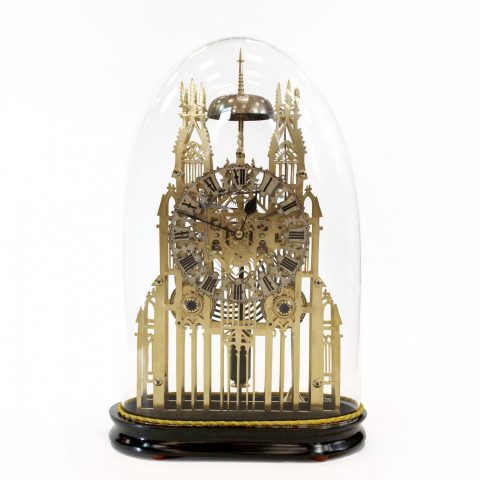York Minster Striking Skeleton Clock

An impressive 1860s double fusee Skeleton Clock of very fine quality by a well known Birmingham maker, Evans of Handsworth.
The thick brass gothic plates that form the framework of the clock depict York Minster. The 8 day duration double fusee chain driven movement is finely engineered with six spoke wheel work, turned and ringed pillars, and anchor escapement. The clock strikes the hours on a coiled blued gong to the rear and a passing strike on the half hour on the polished bell steel bell mounted between the towers.
The silvered skeletonised chapter ring has a black outline to each numeral, and dots for the minutes.
Original matching blued steel hands.
The pendulum comprises an ebonised wood rod and a cylindrical zinc or pewter bob with a large brass regulation adjustment nut. This style of pendulum is an indicator of the maker, William F Evans of Hansdworth, who rarely signed his work despite its very high quality of craftsmanship.
The clock is mounted on a velvet-covered ebonised base raised on bun feet, and is protected by an oval glass dome.
- Height: 23.5 inches (59cms)
- Width: 15 inches (38 cms)
- Depth: 8.5 inches (22 cms)
Overhauled and guaranteed for 3 years.
William Frederick Evans specialised in sculptural skeleton clocks such as the Scott Memorial & Westminster Cathedral. He was born in 1818 and exhibited at The Great Exhibition in 1851. Under his direction the Soho factory in Handsworth, Birmingham was a prolific manufacturer of skeleton clocks
Examples of his skeleton clocks are illustrated and discussed in British Skeleton Clocks by Derek Roberts, pages 66-69.
Also in stock is a rare three-month duration skeleton clock.